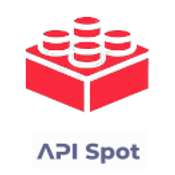Mock sample for your project: Interzoid Zip Code Detailed Info API
Integrate with "Interzoid Zip Code Detailed Info API" from interzoid.com in no time with Mockoon's ready to use mock sample

Interzoid Zip Code Detailed Info API
Version: 1.0.0
Start working with "Interzoid Zip Code Detailed Info API" right away by using this ready-to-use mock sample. API mocking can greatly speed up your application development by removing all the tedious tasks or issues: API key provisioning, account creation, unplanned downtime, etc.
It also helps reduce your dependency on third-party APIs and improves your integration tests' quality and reliability by accounting for random failures, slow response time, etc.
Description
This API provides detailed information for a given zip code, including city, state, latitude, longitude, area size, and various population demographics.
Other APIs by interzoid.com

Interzoid Get Country Match Similarity Key API

Interzoid Get Address Match Similarity Key API

Interzoid Country Data Standardization API

Interzoid Get Currency Rate API

Interzoid Get Area Code API

Interzoid Convert Currency Rate API

Interzoid Get Area Code From Number API

Interzoid Global Page Load Performance API

Interzoid Get City Match Similarity Key API

Interzoid Get Email Information API

Interzoid City Data Standardization API

Interzoid Get Global Phone Number Information API
Other APIs in the same category
Request Baskets API
Request Baskets is an open source project of a service to collect HTTP requests and inspect them via RESTful
API or web UI.
Check out the project page for more detailed description.

link.fish API
Base URL
All URLs referenced in the documentation have the following base:
You can check anytime how many credits you did use already by logging into your link.fish account at https://app.link.fish and checking under: "Plugins" -> "API Dashboard"
If you have problems, questions or improvement advice please send us an email to [email protected]

Proxy API
You can use this API to access all Proxy API endpoints.
Base URL
The base URL for all API requests is https://unify.apideck.com
Headers
Custom headers that are expected as part of the request. Note that RFC7230 states header names are case insensitive.
| Name | Type | Required | Description |
| ---------------------------------- | ------ | -------- | ------------------------------------------------------------------------------------------------------------------------------------------------------------------------------------ |
| Authorization | String | Yes | Bearer API KEY |
| x-apideck-app-id | String | Yes | The application id of your Unify application. Available at https://app.apideck.com/unify/api-keys. |
| x-apideck-consumer-id | String | Yes | The id of the customer stored inside Apideck Vault. This can be a user id, account id, device id or whatever entity that can have integration within your app. |
| x-apideck-downstream-url | String | Yes | Downstream URL to forward the request too |
| x-apideck-downstream-authorization | String | No | Downstream authorization header. This will skip the Vault token injection. |
| x-apideck-downstream-method | String | No | Downstream method. If not provided the upstream method will be inherited, depending on the verb/method of the request this will contain the request body you want to POST/PATCH/PUT. |
| x-apideck-service-id | String | No | Describe the service you want to call (e.g., pipedrive). Only needed when a customer has activated multiple integrations for the same Unified API. |
Authorization
You can interact with the API through the authorization methods below.
apiKey
To use API you have to sign up and get your own API key. Unify API accounts have sandbox mode and live mode API keys. To change modes just use the appropriate key to get a live or test object. You can find your API keys on the unify settings of your Apideck app. Your Apideck application_id can also be found on the same page.
Authenticate your API requests by including your test or live secret API key in the request header.
Bearer authorization header: Authorization: Bearer
Application id header: x-apideck-app-id:
You should use the public keys on the SDKs and the secret keys to authenticate API requests.
Do not share or include your secret API keys on client side code. Your API keys carry significant privileges. Please ensure to keep them 100% secure and be sure to not share your secret API keys in areas that are publicly accessible like GitHub.
Learn how to set the Authorization header inside Postman https://learning.postman.com/docs/postman/sending-api-requests/authorization/#api-key
Go to Unify to grab your API KEY https://app.apideck.com/unify/api-keys
| Security Scheme Type | HTTP |
| ------------------------- | ------ |
| HTTP Authorization Scheme | bearer |
applicationId
The ID of your Unify application
| Security Scheme Type | API Key |
| --------------------- | ---------------- |
| Header parameter name | x-apideck-app-id |
Static IP
Some of the APIs you want to use can require a static IP. Apideck's static IP feature allows you to the Proxy API with a fixed IP avoiding the need for you to set up your own infrastructure. This feature is currently available to all Apideck customers.
To use this feature, the API Vendor will need to whitelist the associated static IP addresses.
The provided static IP addresses are fixed to their specified region and shared by all customers who use this feature.
EU Central 1: 18.197.244.247
Other: upcoming
More info about our data security can be found at https://compliance.apideck.com/
Limitations
Timeout
The request timeout is set at 30 seconds.
Response Size
The Proxy API has no response size limit. For responses larger than 2MB, the Proxy API will redirect to a temporary URL. In this case the usual Apideck response headers will be returned in the redirect response. Most HTTP clients will handle this redirect automatically.
GET /proxy
< 301 Moved Permanently
< x-apideck-request-id: {{requestId}}
< Location: {{temporaryUrl}}
GET {{temporaryUrl}}

Crossbrowsertesting.com Screenshot Comparisons API
Compare two screenshots for layout differences
Compare a full screenshot test of browsers to a single baseline browser for layout differences.
Compare a screenshot test version to another test version - good for regression tests.
Get links to the Comparison UI for visual representation of layout differences
nic.at Domainfinder API Documentation

Image Search Client

AutoSuggest Client

Interzoid Global Page Load Performance API

Rudder API
Introduction
Rudder exposes a REST API, enabling the user to interact with Rudder without using the webapp, for example in scripts or cronjobs.
Versioning
Each time the API is extended with new features (new functions, new parameters, new responses, ...), it will be assigned a new version number. This will allow you
to keep your existing scripts (based on previous behavior). Versions will always be integers (no 2.1 or 3.3, just 2, 3, 4, ...) or latest.
You can change the version of the API used by setting it either within the url or in a header:
the URL: each URL is prefixed by its version id, like /api/version/function.
Version 10
curl -X GET -H "X-API-Token: yourToken" https://rudder.example.com/rudder/api/10/rules
Latest
curl -X GET -H "X-API-Token: yourToken" https://rudder.example.com/rudder/api/latest/rules
Wrong (not an integer) => 404 not found
curl -X GET -H "X-API-Token: yourToken" https://rudder.example.com/rudder/api/3.14/rules
the HTTP headers. You can add the X-API-Version header to your request. The value needs to be an integer or latest.
Version 10
curl -X GET -H "X-API-Token: yourToken" -H "X-API-Version: 10" https://rudder.example.com/rudder/api/rules
Wrong => Error response indicating which versions are available
curl -X GET -H "X-API-Token: yourToken" -H "X-API-Version: 3.14" https://rudder.example.com/rudder/api/rules
In the future, we may declare some versions as deprecated, in order to remove them in a later version of Rudder, but we will never remove any versions without warning, or without a safe
period of time to allow migration from previous versions.
Existing versions
Version
Rudder versions it appeared in
Description
1
Never released (for internal use only)
Experimental version
2 to 10 (deprecated)
4.3 and before
These versions provided the core set of API features for rules, directives, nodes global parameters, change requests and compliance, rudder settings and system API
11
5.0
New system API (replacing old localhost v1 api): status, maintenance operations and server behavior
12
6.0 and 6.1
Node key management
13
6.2
Node status endpoint
System health check
System maintenance job to purge software [that endpoint was back-ported in 6.1]
Response format
All responses from the API are in the JSON format.
{
"action": The name of the called function,
"id": The ID of the element you want, if relevant,
"result": The result of your action: success or error,
"data": Only present if this is a success and depends on the function, it's usually a JSON object,
"errorDetails": Only present if this is an error, it contains the error message
}
Success responses are sent with the 200 HTTP (Success) code
Error responses are sent with a HTTP error code (mostly 5xx...)
HTTP method
Rudder's REST API is based on the usage of HTTP methods. We use them to indicate what action will be done by the request. Currently, we use four of them:
GET: search or retrieve information (get rule details, get a group, ...)
PUT: add new objects (create a directive, clone a Rule, ...)
DELETE: remove objects (delete a node, delete a parameter, ...)
POST: update existing objects (update a directive, reload a group, ...)
Parameters
General parameters
Some parameters are available for almost all API functions. They will be described in this section.
They must be part of the query and can't be submitted in a JSON form.
Available for all requests
Field
Type
Description
prettify
boolean optional
Determine if the answer should be prettified (human friendly) or not. We recommend using this for debugging purposes, but not for general script usage as this does add some unnecessary load on the server side.
Default value: false
Available for modification requests (PUT/POST/DELETE)
Field
Type
Description
reason
string optional or required
Set a message to explain the change. If you set the reason messages to be mandatory in the web interface, failing to supply this value will lead to an error.
Default value:""
changeRequestName
string optional
Set the change request name, is used only if workflows are enabled. The default value depends on the function called
Default value: A default string for each function
changeRequestDescription
string optional
Set the change request description, is used only if workflows are enabled.
Default value:""
Passing parameters
Parameters to the API can be sent:
As part of the URL for resource identification
As data for POST/PUT requests
Directly in JSON format
As request arguments
As part of the URL for resource identification
Parameters in URLs are used to indicate which resource you want to interact with. The function will not work if this resource is missing.
Get the Rule of ID "id"
curl -H "X-API-Token: yourToken" https://rudder.example.com/rudder/api/latest/rules/id
Sending data for POST/PUT requests
Directly in JSON format
JSON format is the preferred way to interact with Rudder API for creating or updating resources.
You'll also have to set the Content-Type header to application/json (without it the JSON content would be ignored).
In a curl POST request, that header can be provided with the -H parameter:
curl -X POST -H "Content-Type: application/json" ...
The supplied file must contain a valid JSON: strings need quotes, booleans and integers don't, etc.
The (human readable) format is:
Here is an example with inlined data:
Update the Rule 'id' with a new name, disabled, and setting it one directive
curl -X POST -H "X-API-Token: yourToken" -H "Content-Type: application/json"
https://rudder.example.com/rudder/api/rules/latest/{id}
-d '{ "displayName": "new name", "enabled": false, "directives": "directiveId"}'
You can also pass a supply the JSON in a file:
Update the Rule 'id' with a new name, disabled, and setting it one directive
curl -X POST -H "X-API-Token: yourToken" -H "Content-Type: application/json" https://rudder.example.com/rudder/api/rules/latest/{id} -d @jsonParam
Note that the general parameters view in the previous chapter cannot be passed in a JSON, and you will need to pass them a URL parameters if you want them to be taken into account (you can't mix JSON and request parameters):
Update the Rule 'id' with a new name, disabled, and setting it one directive with reason message "Reason used"
curl -X POST -H "X-API-Token: yourToken" -H "Content-Type: application/json" "https://rudder.example.com/rudder/api/rules/latest/{id}?reason=Reason used" -d @jsonParam -d "reason=Reason ignored"
Request parameters
In some cases, when you have little, simple data to update, JSON can feel bloated. In such cases, you can use
request parameters. You will need to pass one parameter for each data you want to change.
Parameters follow the following schema:
key=value
You can pass parameters by two means:
As query parameters: At the end of your url, put a ? then your first parameter and then a & before next parameters
Update the Rule 'id' with a new name, disabled, and setting it one directive
curl -X POST -H "X-API-Token: yourToken" https://rudder.example.com/rudder/api/rules/latest/{id}?"displayName=my new name"&"enabled=false"&"directives=aDirectiveId"
As request data: You can pass those parameters in the request data, they won't figure in the URL, making it lighter to read, You can pass a file that contains data.
Update the Rule 'id' with a new name, disabled, and setting it one directive (in file directive-info.json)
curl -X POST -H "X-API-Token: yourToken"
https://rudder.example.com/rudder/api/rules/latest/{id} -d "displayName=my new name" -d "enabled=false" -d @directive-info.json
Apicurio Registry API [v2]
The Apicurio Registry REST API enables client applications to manage the artifacts in the registry. This API provides create, read, update, and delete operations for schema and API artifacts, rules, versions, and metadata.
The supported artifact types include:
Apache Avro schema
AsyncAPI specification
Google protocol buffers
GraphQL schema
JSON Schema
Kafka Connect schema
OpenAPI specification
Web Services Description Language
XML Schema Definition
Important: The Apicurio Registry REST API is available from https://MY-REGISTRY-URL/apis/registry/v2 by default. Therefore you must prefix all API operation paths with ../apis/registry/v2 in this case. For example: ../apis/registry/v2/ids/globalIds/{globalId}.

